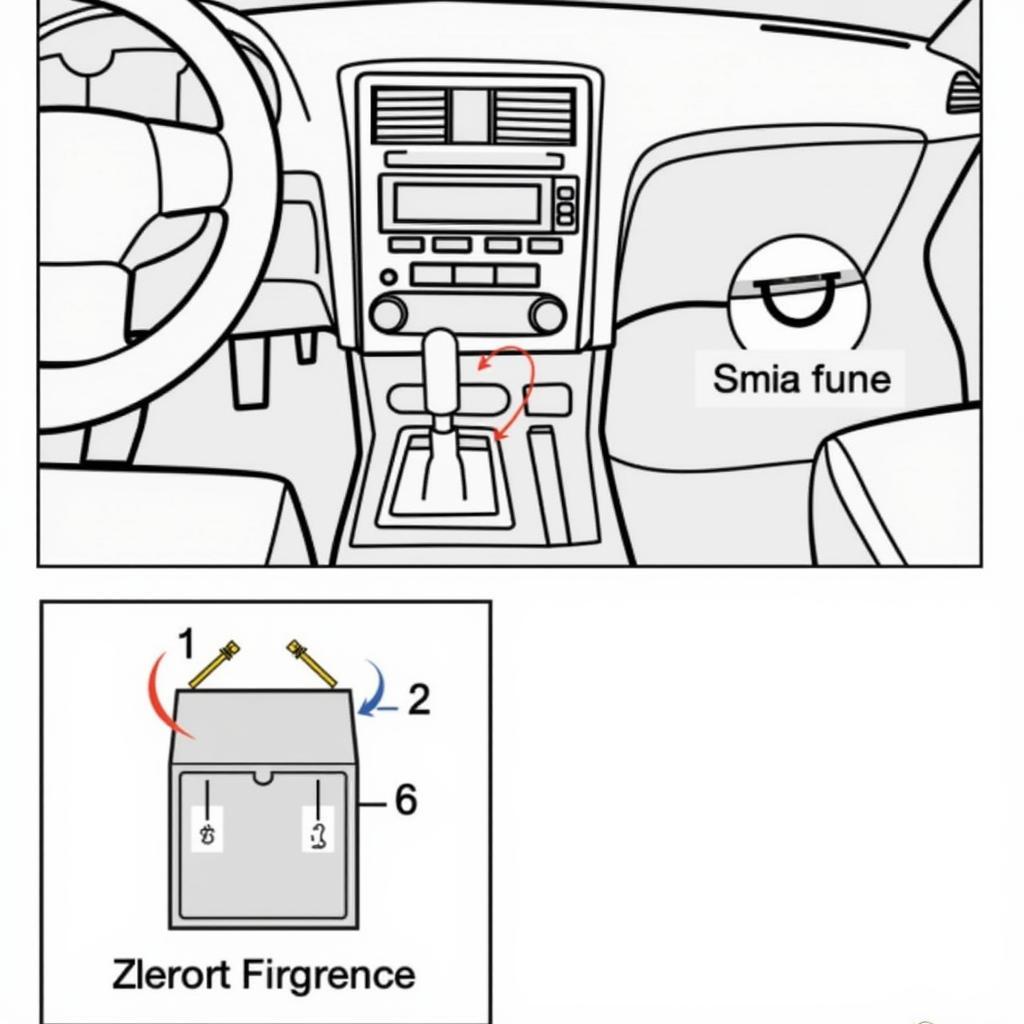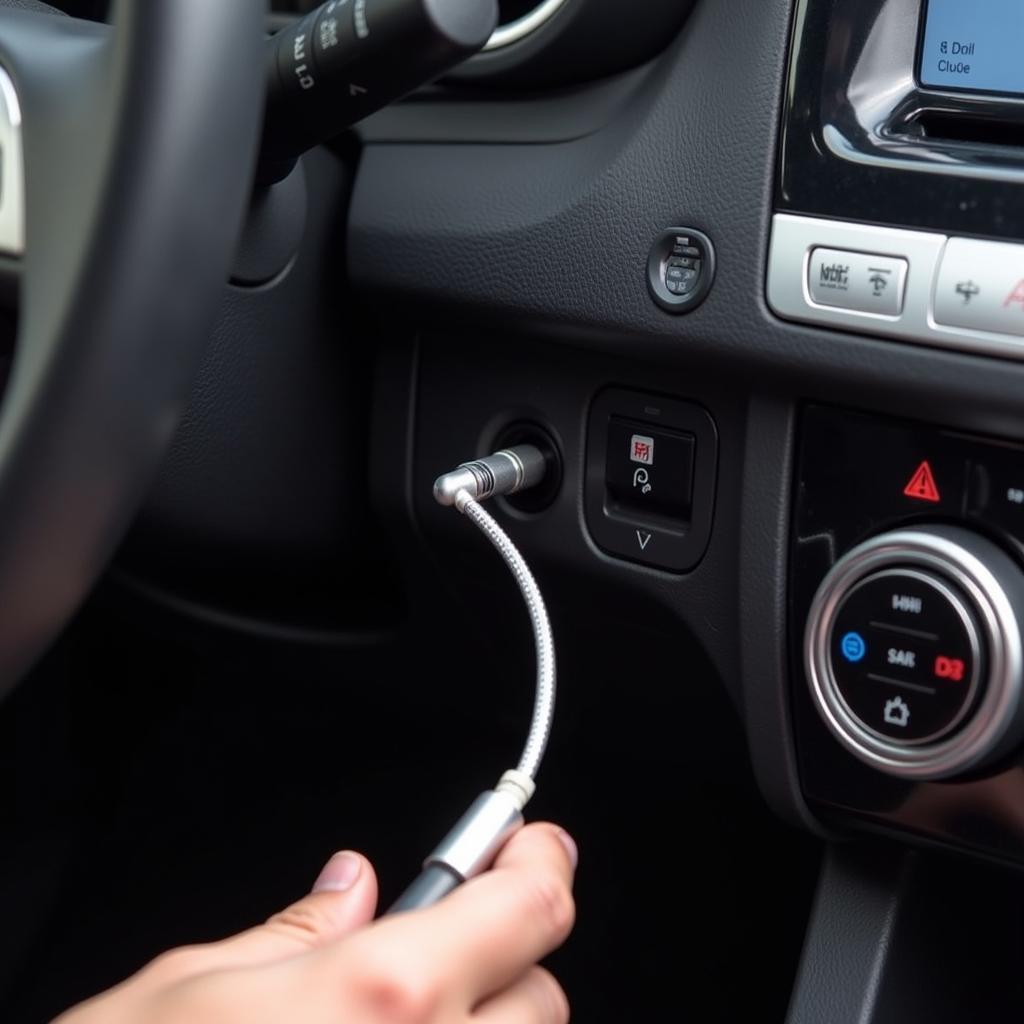Rust on your car body is more than just an eyesore; it’s a serious problem that can compromise the structural integrity of your vehicle. If left untreated, it can spread like wildfire, eventually leading to costly repairs. This comprehensive guide will teach you how to fix rust on your car body, whether you’re a DIY enthusiast or considering professional help.
Understanding the Enemy: Why Does Rust Happen?
Rust, scientifically known as iron oxide, forms when iron or steel is exposed to oxygen and moisture for an extended period. Think of your car as a giant science experiment constantly interacting with the elements. Rain, snow, road salt, and even humidity provide the perfect conditions for rust to flourish. The exposed metal of your car body is especially vulnerable, making regular maintenance and prompt rust repair crucial. You can even fix little car chaerger if you are good with your hands.
Identifying the Different Types of Rust
Not all rust is created equal. Understanding the different types can help you determine the severity of the problem and the best course of action:
- Surface Rust: This is the most common type and appears as small, reddish-brown spots on the paint surface. It hasn’t yet penetrated the metal and is relatively easy to treat.
- Scale Rust: More serious than surface rust, scale rust appears as flaky, blistered paint. It indicates that the rust has begun to eat away at the metal underneath.
- Penetrating Rust: This is the most severe type of rust and signifies significant damage to the metal. It often appears as holes or weak spots in the car body.
How to Fix Rust on a Car Body: A Step-by-Step Guide
Fixing rust involves removing the affected area and protecting the exposed metal to prevent future corrosion. Here’s a breakdown of the process:
- Gather Your Supplies: You’ll need sandpaper (various grits), rust converter, primer, paint that matches your car’s color, masking tape, a wire brush or grinder, safety glasses, and gloves.
- Prepare the Area: Clean the rusted area thoroughly with soap and water. If you have a car usb charging slow fix, it might be a good time to address that too.
- Remove the Rust: Use the wire brush, sandpaper, or grinder to remove all visible rust, including any loose paint.
- Apply Rust Converter: This chemical solution converts the remaining rust into a stable compound that can be painted over.
- Prime the Area: Apply a thin coat of automotive primer to protect the bare metal and provide a good surface for the paint to adhere to.
- Paint and Finish: Apply several thin coats of paint, allowing each coat to dry before applying the next. Finish with a clear coat for added protection.
When to Call in the Professionals
While minor surface rust can often be tackled with DIY methods, more severe rust damage may require the expertise of a professional auto body shop. They have the tools and experience to handle complex repairs and ensure a lasting fix. Don’t hesitate to seek professional help if you’re unsure about your abilities or the extent of the damage.
“Ignoring rust is like ignoring a small leak in your roof. It might seem minor at first, but it can quickly escalate into a much bigger problem,” says John Miller, an experienced automotive technician with over 20 years in the industry.
Preventing Future Rust: Tips for Keeping Your Car Rust-Free
Prevention is always better than cure. Here are some simple yet effective ways to keep your car rust-free:
- Regular Washing: Wash your car regularly, especially during winter months, to remove road salt and other corrosive substances. Consider learning how to fix a car lighter for convenience.
- Waxing: Apply a coat of wax every few months to provide an extra layer of protection against the elements.
- Undercoating: Consider applying an undercoating to protect the underside of your car from road debris and moisture.
“A little preventative maintenance can go a long way in keeping your car rust-free and looking its best,” advises Sarah Davis, an automotive engineer specializing in corrosion prevention. She also recommends learning to fix car cigarette lighter not working.
Conclusion
Fixing rust on your car body is crucial for maintaining its value and ensuring its longevity. By understanding the causes of rust, the different types, and the proper repair methods, you can effectively combat this common problem and keep your car looking its best. Remember, addressing rust promptly is key to preventing further damage and costly repairs down the road. Contact AutoTipPro at +1 (641) 206-8880 or visit our office at 500 N St Mary’s St, San Antonio, TX 78205, United States for further assistance. Don’t forget, you can also 12v car outlet fix if needed.






Leave a Reply